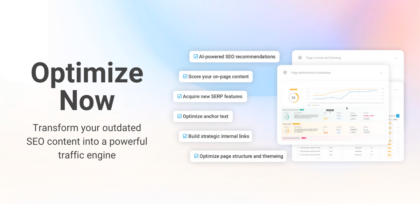Why tracking search results multiple times a day is critical to the success of your campaign
24 Dec 2018|2 MIN READ
On September 12th at 6pm (UK time) Apple released not one, not two, but three much anticipated new iPhones: ‘iPhone XR’, ‘iPhone XS’ and ‘iPhone XS Max’.
This led to millions of search results from fans keen to find out the latest on all the new feature updates.

This year, we searched general iPhone release queries 3.3 million times. This is a huge window of trending opportunity; translating as traffic and conversions.
We used our new two hourly ‘Rapid tracking’ feature to see how this year’s Apple release played out, with some very interesting developments.
Apple were missing for their own product release
At 2pm on release day, we setup a ‘Rapid tracking’ campaign to monitor the first page search results of Google UK, every two hours, for the following eight terms:
- iphone 9
- iphone x
- iphone xr
- iphone xs
- iphone xs max
- new iphone
- new iphone deals
- new iphone price
Our SERP Matrix feature shows the composition of page one features, and the related site dominating that position.
Each column represents the composition of the page one landscape in search every two hours, and each row represents the feature present for that position (i.e. Top Stories, Classic Links etc.).
Clicking on the feature reveals which websites rank in that position.
The example below focuses on the search term ‘iPhone 9’.

In Google UK, four hours prior to the 6pm release, Apple were nowhere to be seen on page one of the SERPs.
Instead, in joint first place, with prime position in ‘Top stories’ were publications CNet, The Independent and The Telegraph.
Taking other prime search real estate, in what would be position three, was the SERP feature ‘Video cards’, which contained YouTube user generated content, based around ‘iPhone 9 leaks’.
Since Apple hadn’t released the official name of their new phone(s) at this point, the term ‘iPhone 9’ - following on from a prior release of the iPhone 8 in September 2017 - was a popular, high volume search.
In other words, it was important to be visible for this search, in order to capture the interest of potential customers during the research phase. Apple were not.
Two hourly tracking for the new iPhone release, and where Apple performed

If we look at the SERP landscape for the official release name of the new product ‘iPhone XR’ (above) we can see that Apple first appeared with a ‘Classic link’ in position 4, at the time of their 6pm release. Their PPC ads then appeared at 10pm that evening, enabling them to gain second place position behind Sky.com.
What’s also interesting in this two hourly analysis, from a ‘Google algorithm’ perspective, is that Apple appears to own multiple ‘Classic link’ (grey circles in visuaition) positions in the SERPs for this term.
Despite having claimed to cracked down on clustering in the search results, it seems that Google is clearly still serving multiple results for the same website. Seeing this in near real-time and understanding how frequently the search landscape shifts opens up a whole new world of opportunity for ensuring content is best optimised at every point of the day.
Using two hourly search insight to inform campaigns and product releases
![]()
Taking another look at Apple’s performance across all the highest volume, most relevant product release search terms, we can see once again that the brand only performs in ‘Classic links’ 87.5% of the time and ‘Product listed ads’ 8.3% of the time, with no further visibility in any other feature.
While Apple did still appear during their product release, with two hourly insight, the brand could take learnings for future releases; from creating and optimising a greater variety of content which ranks highly at the time of release, such as Video Cards, to ensuring visibility through partnerships with the dominant publications that feature in Top Stories, such as The Telegraph.
While Apple is a huge brand with an incredibly loyal customer base, having greater visibility over all of their content assets in search over the course of their product release could still well have translated as millions of pounds in additional revenue.
Two hourly tracking provides this invaluable insight.
With two hourly, daily, weekly and monthly tracking, Pi Datametrics is the only enterprise search solution to offer flexibility of four tracking frequencies, giving you access to the right frequency of data, for the right objective. To find out more about Rapid Tracking, get your demo today.
Never miss a post
Join our mailing list and have our SEO news delivered straight to your inbox.
Never miss a post
Join our mailing list and have our SEO news delivered straight to your inbox.




